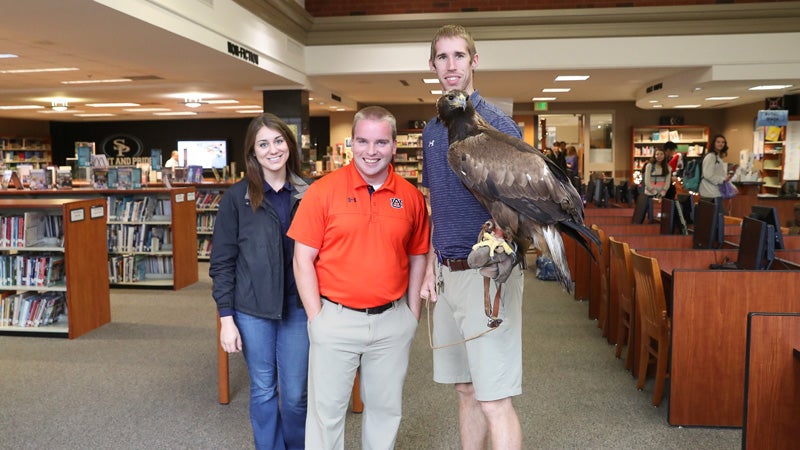Spain Park students enjoy visit from Auburn raptors
Published 9:06 am Monday, December 18, 2017
By MICHAEL J. BROOKS
Special to the Reporter
HOOVER – Students at Spain Park High School enjoyed a visit on Dec. 6 with six wildlife guests from Auburn University.
The entourage included two owls, a hawk, a falcon, a vulture and an eagle.
The traveling wildlife program was sponsored by the Southeastern Raptor Center at Auburn.
According to raptor specialist, Rhett LaPorte, the center sponsors 250-300 programs like this each year.
“The program at Spain Park was number 254 for 2017, and we have an additional two or three left this year,” LaPorte said.
LaPorte attended Oak Mountain High School and graduated from Auburn in 2015 with a wildlife degree. He began work at the center in January.
“A raptor is a bird of prey, and the term is an umbrella term,” LaPorte explained. “The eagles we own are part of the raptor program. We have five eagles in our education program, and the release program has a few more.”
LaPorte said the education program has birds with injuries preventing their release, or birds that have been “imprinted,” or raised with people illegally. This means they can’t be safely set free, though the goal of the release program is to do exactly that.
The two most famous raptors, the “War Eagles,” cannot be set free.
“We have two bald eagles trained to fly in Jordan-Hare Stadium,” LaPorte said. “Spirit has a beak injury and we don’t think she could feed herself, and Nova (War Eagle VII) was bred illegally in captivity and is too used to people to live in the wild.”
According to the raptor website, Nova was sidelined this year due to a heart irregularity, so Spirit has been performing for home games at Jordan-Hare.
LaPorte said the education raptors are accustomed to traveling.
“They have their own carriers, and we ‘black them out’ so the animals sleep and travel well,” he said. “And they’re used to being around people and cameras.”
Nevertheless, LaPorte said attendees at education events aren’t allowed to touch the animals.
“We don’t allow touching due to safety concerns,” he said. “We always consider it dangerous to do this. We handlers must never let our guard down, either, or we can be bitten or clawed. But we sometimes bring talons and feathers so that boys and girls can see and touch these.”
The raptor area is about five minutes from the main campus on Shug Jordan Parkway, close to the Veterinary School, LaPorte said. His department—the education wing—uses student volunteers to help with the program, whereas the release wing often uses community volunteers.
Spain Park librarian Dr. Casey Middlebrooks hosted the program at the school. He said it was one of many programs the library sponsors during the year.
“We’ve had a sushi chef, an artist and a magician as part of these enrichment programs” he said. “And the programs are paid from our fundraising efforts, such as the annual book sale.”
Middlebrooks was effusive in praise for the raptor program.
“This event was very informative,” Middlebrooks said. “We learned biology and anatomy and it was very entertaining as well. And impressive. We did this about two years ago, and I’m confident we’ll do it again.”
The Southeastern Raptor Center website is Auburn.edu/raptor.













